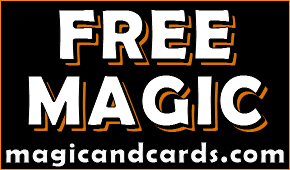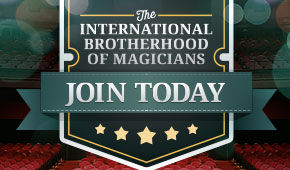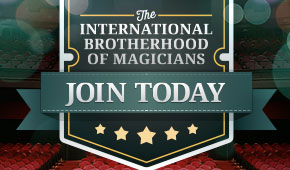The Linking Ring History
Nine decades and still going strong
By Samuel Patrick Smith
Reprinted from the September 2012 issue.
In the history of magic, The Linking Ring holds the world’s record for the greatest number of magic periodicals printed. Since 1922, millions of copies have been distributed – but only to members of the International Brotherhood of Magicians.
During its ninety years, The Linking Ring has had fourteen editors and evolved from a four-page mimeographed publication to a professionally printed and internationally distributed journal. It has documented the most significant events in our art over the past nine decades, traced the rise to fame of the “greats” in magic, and enabled magicians all over the world to exchange ideas. Through the years, The Linking Ring has had its detractors, and yet – to borrow a phrase from Winston Churchill – “Malice may attack it, ignorance may deride it, but in the end – there it is.”
.jpg) In the beginning, no one suspected that The Linking Ring would gain such wide circulation, eventually reaching thousands of magicians in eighty-eight countries. It all began when Len Vintus and Gene Gordon became friends through the Amateur Magicians Correspondence Club, founded by Theodore Brameld (1904-1987). Vintus was a magician and ventriloquist from Winnipeg, Canada; Gordon, an avid magic enthusiast, hailed from Lyons, New York. They both received the magazine that fifteen-year-old Brameld began publishing for members of his organization in November 1919. After ten issues, however, the A.M.C.C. Review ceased with the December 1920 number.
In the beginning, no one suspected that The Linking Ring would gain such wide circulation, eventually reaching thousands of magicians in eighty-eight countries. It all began when Len Vintus and Gene Gordon became friends through the Amateur Magicians Correspondence Club, founded by Theodore Brameld (1904-1987). Vintus was a magician and ventriloquist from Winnipeg, Canada; Gordon, an avid magic enthusiast, hailed from Lyons, New York. They both received the magazine that fifteen-year-old Brameld began publishing for members of his organization in November 1919. After ten issues, however, the A.M.C.C. Review ceased with the December 1920 number.
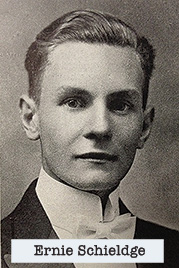 After the demise of the A.M.C.C. and another organization, the Society of American Amateur Magicians, Vintus and Gordon decided to start their own correspondence club in May 1922. Since they lived in different countries, Vintus suggested calling it the “International Brotherhood of Magicians.” After printing a letterhead, all they needed were members.
After the demise of the A.M.C.C. and another organization, the Society of American Amateur Magicians, Vintus and Gordon decided to start their own correspondence club in May 1922. Since they lived in different countries, Vintus suggested calling it the “International Brotherhood of Magicians.” After printing a letterhead, all they needed were members.
Vintus recruited fellow ventriloquist Ernie Schieldge from Hartford, Connecticut, who became I.B.M. No. 3. He also signed up the fourth member, Werner Dornfield, who was visiting Winnipeg. By the fall of 1922, they had twenty members, and the founders – still teenagers – decided to publish a magazine. Gene Gordon suggested calling it The Linking Ring. In later years he modestly maintained that coming up with the name was easy. “All I had to do was look through a magic catalog,” he said. From the name later evolved “Rings,” designating local groups of I.B.M. members.
At the time, however, organizing local groups was not under consideration. This was to be a correspondence society with members linked through a magazine. Ernie Schieldge and Gene Gordon would serve as co-editors; Len Vintus would handle production. He worked in the mailroom of the North American Lumber Company on the seventh floor of the Union Bank Building in Winnipeg and had access to an automated addressing device and a mimeograph machine.
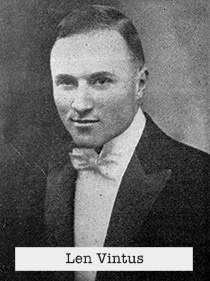
By the fall of 1922, ink was drying on the first issue of The Linking Ring. The front page consisted of the masthead listing benefits and aims of the organization – “Fraternity,” “Publicity,” and “Mystery” – and an unsigned editorial by Vintus. The organization of twenty members was “far exceeding our fondest hopes,” he wrote. The Linking Ring would not become a monthly just yet but would be published “now and then.” Page two consisted of an article about Vintus by Gene Gordon. “His heart and soul is engaged in the work of the I.B.M.,” Gordon wrote, “and he has spent a large amount of his own money for the welfare of the society. I doubt if we could have found a better president to lead us, as he is not only a well known and popular magician, but also an efficient business man.”
The third page listed the names, addresses, and birthdays of all twenty members. Interestingly, Blackstone – I.B.M. number 10 – is not among them. His name appears in the next issue, published in early 1923. It seems likely that when membership numbers were later assigned, Blackstone – one of the top names in magic – was given this special number out of appreciation for his early support.
In 1923, The Linking Ring began appearing every other month. In December, it became a monthly but took a hiatus in the summer of 1924, with no issues appearing in June, July, or August. Ernest K. Schieldge and Gene Gordon continued to be listed as editors until the December 1924 issue when Gordon’s name was replaced with, “Tom Bowyer, Advertising Manager.” His newsy column, “Within the Shuffle,” appeared, and his name returned as co-editor for the last time in January 1925.
.jpg) By then, eighteen issues of The Linking Ring had been published. A typical issue was twelve pages and contained news, jokes, advertising, notices of sick and convalescing magicians, and tricks contributed by members.
By then, eighteen issues of The Linking Ring had been published. A typical issue was twelve pages and contained news, jokes, advertising, notices of sick and convalescing magicians, and tricks contributed by members.
With membership approaching 500, The Linking Ring would now take the leap to a printed publication, and the Great Kolar – Joseph J. Kolar of Chicago, the professional escape artist and magician who later invented Clippo and Seven Keys to Baldpate – was enlisted to produce the magazine. Another Chicago magician, Oscar C. Aubut, was to edit the material sent to him by Vintus. He had been a magic enthusiast for thirty years, and both Aubut and Kolar – among other applicants – were officially accepted for membership in the Society of American Magicians at their February 3, 1923 meeting.
![]() Curiously, Aubut was not a member of the I.B.M. As a veteran journalist with experience in printing, however, Aubut seemed a suitable choice.
Curiously, Aubut was not a member of the I.B.M. As a veteran journalist with experience in printing, however, Aubut seemed a suitable choice.
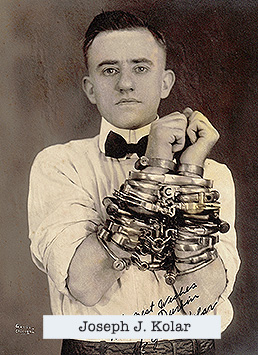 He was born January 7, 1871, in New York. At age twenty-three he married Blanche Gertrude Ralph. Six years later, the 1900 census showed Aubut living at his in-laws’ home in Queens. The next year, at age thirty, Aubut landed a job as editor of The Sportsman, a new monthly magazine that, according to one newspaper, would be “devoted to Yachting, Hunting, Fishing, etc., and will start off with a 6,000 circulation.” After seven years, he was still editor of the magazine, perhaps indicating that he had reliably fulfilled his duties.
He was born January 7, 1871, in New York. At age twenty-three he married Blanche Gertrude Ralph. Six years later, the 1900 census showed Aubut living at his in-laws’ home in Queens. The next year, at age thirty, Aubut landed a job as editor of The Sportsman, a new monthly magazine that, according to one newspaper, would be “devoted to Yachting, Hunting, Fishing, etc., and will start off with a 6,000 circulation.” After seven years, he was still editor of the magazine, perhaps indicating that he had reliably fulfilled his duties.
By 1915, Aubut was employed by the Jersey City Printing Company and was active in the Craftsmen’s Club, participating in at least one baseball game between the bindery and the printing departments. The next year, he was listed as editor of the Telegraph, a newspaper in Sharon, Pennsylvania. The 1920 census once again shows Aubut living with his wife’s parents, but this time in Akron, Ohio, the “Rubber Capital of the World.” He was athletic director for employees at a rubber company, but within two years had moved to Chicago and become active in the Society of American Magicians.
The Chicago address Aubut used for the publication office of The Linking Ring was 1522 South Michigan Avenue. As late as 1914, the Chicago Blue Book listed the street numbers 1518 to 1522 as “Oregon Flats.” By 1917, a business that repaired “scored cylinders” and offered welding and grinding services, was located at 1522 South Michigan Avenue, and thirty years later a company in that location was selling vacuum-air hydraulic fuel pumps. Whether a printing shop was located there in 1925 or Aubut worked for another business at that address is unknown.
What is known, however, is that the I.B.M. leadership was frustrated by delays in producing the first printed copy of The Linking Ring. After the last mimeographed copy was completed in January, a printed edition did not appear in February, March, or April.
Finally Gene Gordon wrote in the May 1925 issue of The Sphinx: “‘The Linking Ring,’ official magazine of the I.B.M., after being mimeographed for the past two years has now graduated into a printed magazine, published under the direction of The Great Kolar. It has been late in making its appearance, owing to a series of troubles and alibies on the part of the printer, which ended in another printer being impressed into service.”
At last The Linking Ring rolled off the press, professionally typeset and beautifully produced, bearing Len Vintus’ portrait on the front cover. Dr. A.M. Wilson, feisty editor of The Sphinx and one-time detractor of the I.B.M., wrote: “The Linking Ring, official organ of the International Brotherhood of Magicians, begins Vol. 3 as a regular printed magazine of 12 pages full of good magic and magical news items. O. C. Aubut, the editor, is a new one to me but he edits The Linking Ring like an old hand at the business. Success to you and to the I. B. M.”
Despite Wilson’s plaudits, Oscar Aubut’s career as editor of The Linking Ring came to an end with his first issue. Unknown to many who were bitterly complaining of the delays in production, Aubut at fifty-five was a dying man. By the fall of 1926, Aubut was diagnosed with “consumption” – the final stages of tuberculosis. He went to Colorado Springs, a hotbed of sanatoriums, for treatment. On June 24, 1927, he wrote to his wife – who had stayed behind with their two-year-old daughter – saying that he was feeling better and would be home soon. Two hours later, as he was boarding a streetcar, Aubut dropped dead. He was fifty-seven.
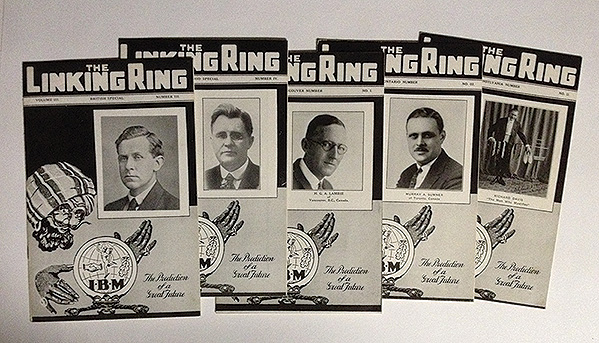 The years between 1925 and 1927 were chaotic for the I.B.M. The Linking Ring had five different editors, and the magazine was sometimes tossed back and forth like a hot potato. Following the bumpy start getting the first printed copy of The Linking Ring off the press, Vintus resumed his role as publisher with the June 1925 issue, and Schieldge returned as editor of the journal. Gordon was listed as Publicity Director. Years later, recalling those turbulent days of 1925, Vintus was diplomatic: “The first [printed] issue was produced in Chicago, in May 1925 by The Great Kolar, but this venture proved impractical due to the delays caused by transmitting material from headquarters so that the second printed issue was again published by the writer in Winnipeg.” The publication address was his home at 156 Edmonton Street, Winnipeg, Canada.
The years between 1925 and 1927 were chaotic for the I.B.M. The Linking Ring had five different editors, and the magazine was sometimes tossed back and forth like a hot potato. Following the bumpy start getting the first printed copy of The Linking Ring off the press, Vintus resumed his role as publisher with the June 1925 issue, and Schieldge returned as editor of the journal. Gordon was listed as Publicity Director. Years later, recalling those turbulent days of 1925, Vintus was diplomatic: “The first [printed] issue was produced in Chicago, in May 1925 by The Great Kolar, but this venture proved impractical due to the delays caused by transmitting material from headquarters so that the second printed issue was again published by the writer in Winnipeg.” The publication address was his home at 156 Edmonton Street, Winnipeg, Canada.
Only six issues of The Linking Ring appeared in 1925, and after June they no longer carried dates on the cover but were given names: “British Special,” “Ohio Special,” “Australasian Special,” and “Christmas Special.” The next year, Editor Schieldge produced issues in January and February, and March. Another did not appear until August 1926 when Len Vintus took the helm as Editor and Publisher.
![]()
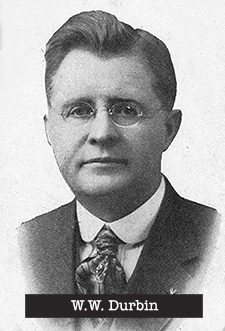 Earlier in the year, Durbin had offered the founders the use of his Egyptian Hall museum and theater in Kenton, Ohio, to hold a convention. As a courtesy, Vintus put him on the ballot as a candidate for president, never thinking that Durbin would win. That June, one hundred twenty-five magicians gathered for the world’s first magic convention and were dazzled by Durbin’s hospitality. “Well, as I had predicted,” Gene Gordon later wrote, “Mr. Durbin was elected President, and the I.B.M. passed from our control. The ‘kid’ had grown up and left his parents.”
Earlier in the year, Durbin had offered the founders the use of his Egyptian Hall museum and theater in Kenton, Ohio, to hold a convention. As a courtesy, Vintus put him on the ballot as a candidate for president, never thinking that Durbin would win. That June, one hundred twenty-five magicians gathered for the world’s first magic convention and were dazzled by Durbin’s hospitality. “Well, as I had predicted,” Gene Gordon later wrote, “Mr. Durbin was elected President, and the I.B.M. passed from our control. The ‘kid’ had grown up and left his parents.”
By the end of 1926, membership exceeded 1,250. Durbin was serving as president, with Vice Presidents Harry Blackstone, Frederic Eugene Powell, and Servais LeRoy. Vintus was Secretary and Editor of The Linking Ring; Schieldge held the post of Assistant Secretary; and Gordon was Publicity Director. For the I.B.M., it was truly the Roaring Twenties.
Vintus continued editing and producing the magazine in Canada. The December 1926 issue was fifty-six pages with the cover consisting only of a color depiction of the Three Wise Men as they gazed at a bright star. Editor Vintus thanked “Brother Durbin” for financing the issue, but he was soon to find that his assistance had a price.
---------------------------



